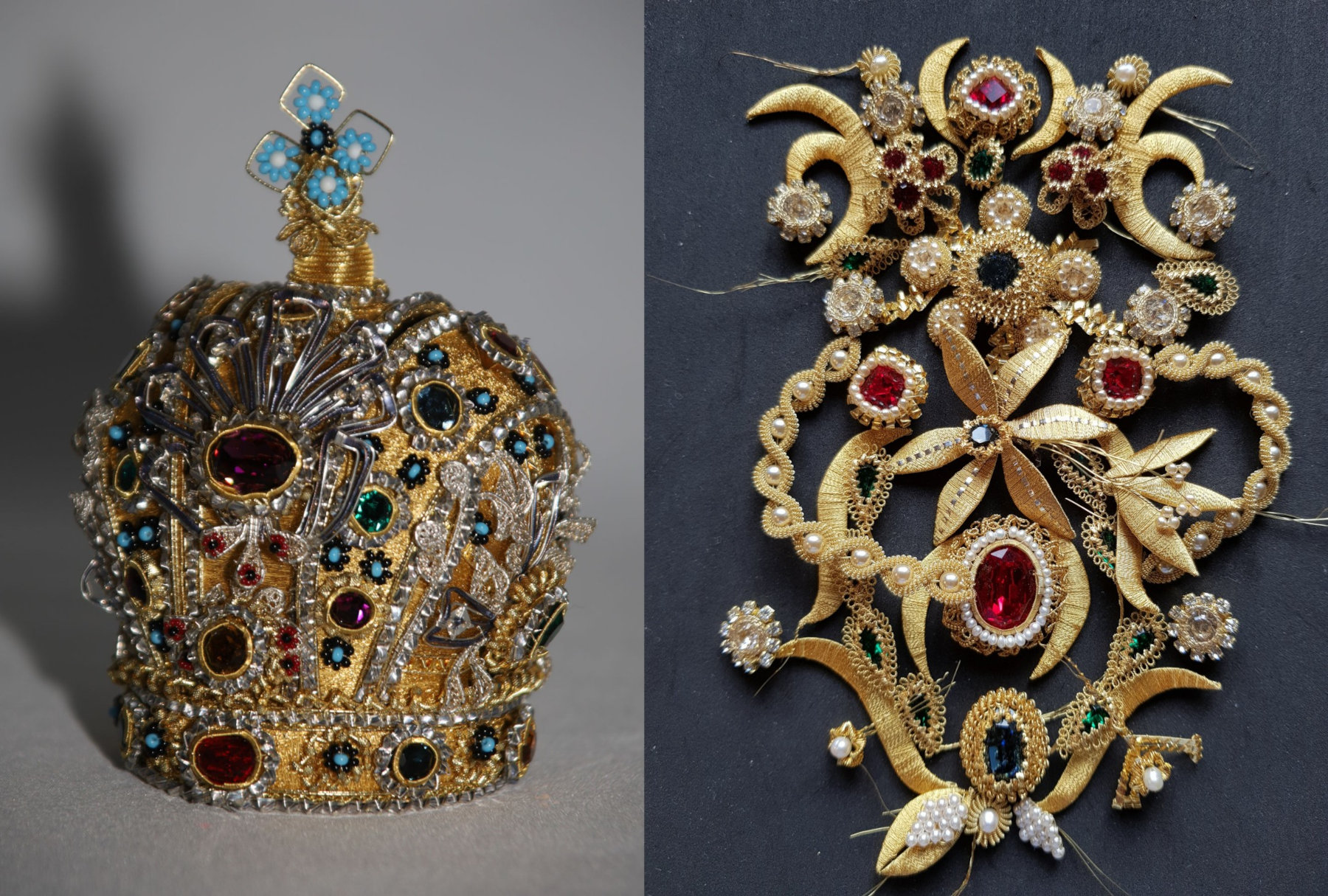Monastery work – a historic and rare handicraft
They are among the most graceful small objects of the Baroque period. Appreciated by collectors, they have often gone unnoticed by the wider public, including those interested in art history.
The roots of convent work go back to the Middle Ages to the women’s convents of the most diverse orders as well as to some men’s convents. The variety of techniques used in monastic work is incalculable – there were hardly any limits to ingenuity and imagination, and they unfolded fully in the wealth of forms of the Baroque. Each monastery probably had its own special forms and elements that were passed on through oral instruction and demonstration.
The most commonly used materials were gold and silver wire, gold bouillon, gold linen, fabrics such as brocade, velvet, silk and lamé, parchment, wax, cut stones, pearls and sequins, but mirrors, shells and snail shells and dried grasses can also be found.
For many, the re-encounter with old box pictures and the “Fatschenkindl” in richly decorated garments awakens memories of family heirlooms gathering dust unnoticed in attics or even given away unsuspectingly and carelessly. Today, the enthusiasm for this wonderful handicraft is capturing more and more people, and so magnificent ornaments in an infinite variety of shapes and colours are once again being created in blossoms, leaves and tendrils according to old models and traditional processing techniques.


